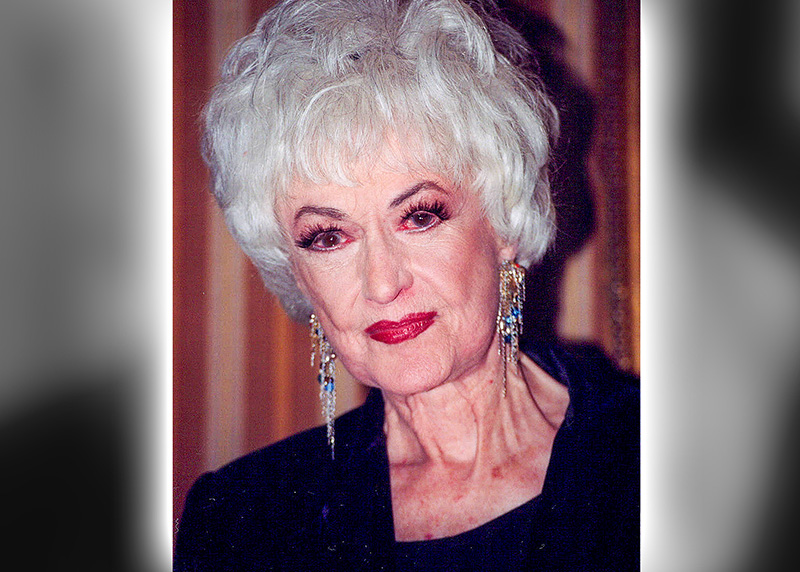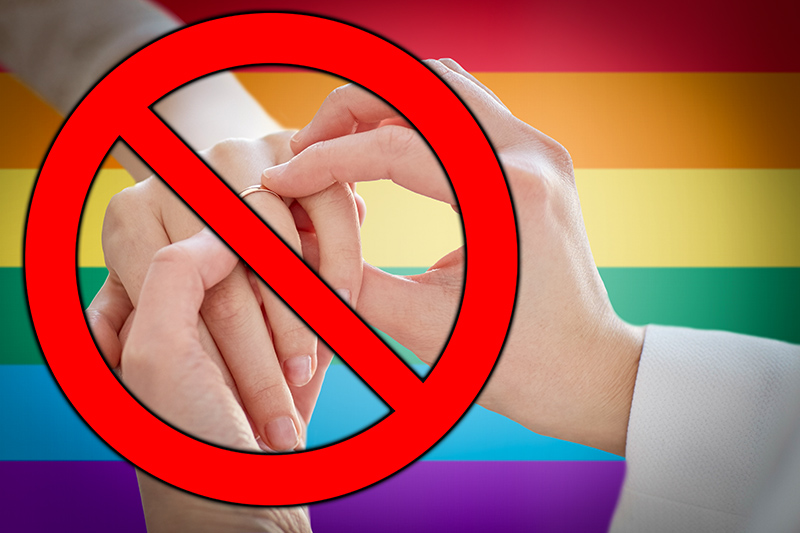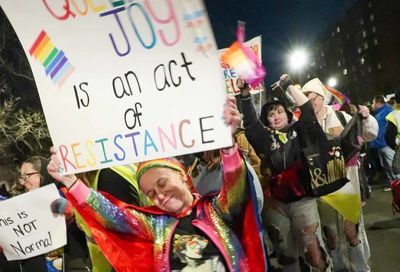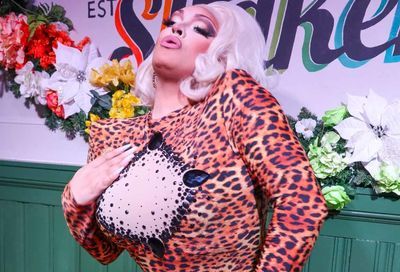After Trump’s inauguration, half a million women will march for equality
Participants in the upcoming Women's March on Washington share thoughts about why it's important to be heard en masse

What started out as an idea on a Facebook post has grown into a national show of strength. The day after President-elect Trump is sworn into office, hundreds of thousands of women will march through D.C. in a powerful, visual declaration that they will no longer be silent about issues that matter to them.
Theresa Shook, a retiree from Hawaii and a Hillary Clinton supporter, conceived the idea after Clinton’s defeat. Shook hypothesized what might happen if women were to mobilize and march through Washington, D.C. during Inauguration weekend. Sure of her idea, she created a Facebook event, and after receiving 40 responses went to bed. By the the following morning, she had 10,000.
“I think what Theresa felt was that she wanted to join other women in unity, to show our new president power and how women can come together,” says Carmen Perez, one of the national co-chairs of the Women’s March on Washington.
As her idea took off, Shook handed over the reins to Perez and three other women — Tamika Mallory, Bob Bland, and Linda Sarsour — who had experience organizing marches and enlisting people and representatives to get involved. Though the march is nonpartisan, a number of organizations that are either liberal-leaning or opposed to Trump also came on board to help ensure its success. Interest in the event has continued to grow, with half a million women expected to march on Saturday, Jan. 21 — half of them in Washington and the rest in one of 268 “sister marches” held in cities throughout the world that day.
“I think the moment right now has allowed us to actually step out of our silence and really be intentional about intersectionality and collaboration,” says Perez. “I think that’s what this march is trying to accomplish. We’re coming together, not only in solidarity, but also seeing our liberation bound in one another.”
For many women, the march serves as a way to counteract the divisiveness that was sown and the misogynistic rhetoric that was employed during the presidential campaign.
“One of the things I’m so excited about with this march is that they’ve put a human rights frame around women’s rights,” says Terry O’Neill, president of the National Organization of Women (NOW), one of the groups co-sponsoring the march.
While NOW will be using the march to promote several issues — LGBT equality, reproductive health and justice, economic justice, ending racism and voter suppression, ending violence against women, and getting women into the Constitution of the United States — O’Neill says that many other women have been mobilized because of their disgust for the incoming administration.
O’Neill doesn’t mince words when it comes to the threat she believes the Trump administration poses to women. She calls Vice President-elect Mike Pence a “rabid anti-women crusader” and President-elect Trump the “Predator-in-chief” — enabled by “his cabinet of abusers.”
“[Trump] has bragged about committing sexual assault himself, he has surrounded himself by men who stand accused of domestic violence — Steve Bannon is one. He has brought Roger Ailes into his inner circle, a serial sexual harasser,” says O’Neill. “He has nominated Andrew Puzder for Secretary of Labor, who sexually objectifies women in his ads, and then pays them a starvation wage, and has done everything to stop the advancement of a living wage for workers. And, of course, in Steve Bannon, [Trump] has also brought Neo-Nazis and white supremacists to the White House of the United States. It’s extremely troubling to women. This is why women are flocking to this march, on two months’ notice. It’s unheard of — most marches of this type require 15 to 24 months to plan.”

Mara Kaiser Braunger, vice president of external relations for Planned Parenthood of Washington, D.C., says that some women may be motivated to demonstrate because of fears over what the incoming administration will do to curb reproductive freedom.
“The people who are now in power do not look favorably upon the type of access, especially in terms of reproductive health care, that is necessary for a healthy, thriving society,” says Braunger. “And the threat has never been more palpable.
“My generation has never really had to engage about reproductive health issues in this manner. It is a sobering time,” she adds. “And so part of the power of these people who have been Planned Parenthood supporters for so long, but were never maybe vocal about it, are coming together to be steadfast in our resolve to make sure women’s access to reproductive health care is available to all.”
Jackie Savage, a member of the regional leadership team for the D.C. chapter of the Women’s March on Washington, views the marches as a call to action that many women are heeding, whatever issue happens to motivate them.
“Not just in D.C., but all over the nation, women are coming together to say ‘This isn’t okay,'” Savage says. “The language that was used during the election, and a whole host of other issues that need to be addressed. I see this as the beginning of a larger movement.”
From a personal standpoint, Savage is worried about the erosion of LGBT rights, including the right to marriage and freedom from discrimination, particularly for members of the transgender community.
“I felt like we were moving in a very positive direction, and now I’m very worried that the community is going to be extremely vulnerable,” she says.
Mercy Morganfield, another member of the regional leadership team for the D.C. chapter, says the key issue of the women’s march is the First Amendment and its protections for freedom of speech and freedom of association.
“I think the biggest thing we have at risk right now is the ability to speak freely, and to organize, and to march. And to have our voices heard,” says Morganfield. “Of course, you have the other things that are at risk that everyone knows about. Things like women’s reproductive rights are at risk. Women’s ability to organize economically is at risk. Women’s ability to be able to run for any office and have any traction is at risk. But all of those things are even more at risk when we don’t have the ability to talk about them.”
O’Neill, of NOW, hopes that the march will inspire women, regardless of political affiliation, to get involved and begin organizing at the local level.
“Women are going to have a number of opportunities, really,” she says. “The first thing they need to do is look in their communities. There are many opportunities for people to ‘plug in,’ even if they’re in red states, sometimes especially if they live in red states.
“In North Carolina, the NOW chapter is very involved with ‘Moral Mondays,’ That is a movement that only needs more volunteers,” O’Neill says, referring to a coalition of religious leaders, community organizations, and representatives from the labor, LGBT and immigrant communities that demonstrates against regressive actions taken by the North Carolina legislature. For instance, the coalition heavily protested the infamous anti-transgender bathroom bill HB 2.
“It’s very exciting, because there’s been a virtual coup d’etat in North Carolina, and ‘Moral Mondays’ is doing everything to reverse it,” says O’Neill.
Morganfield notes that some people still question the purpose of having a women’s march and mistakenly view it as a protest against the incoming administration.
“I say to people who wonder why a women’s march is important, why is any march important? What do people march for? They march because they feel disenfranchised, or they feel left out,” she says. “Or they feel like equality’s not happening for them. If we can’t get our voices heard through the regular channels, and even if we can, that’s our right. That’s freedom of speech. If you don’t agree with it, you don’t have to march.
“But many people are asking, ‘Why even march?’ And that could be a giving up, or ‘the time for protest is over.’ But we’re not protesting anything,” she continues. “We are mobilizing, energizing and catalyzing women to action. And the country should feel good about that.”
Support Metro Weekly’s Journalism
These are challenging times for news organizations. And yet it’s crucial we stay active and provide vital resources and information to both our local readers and the world. So won’t you please take a moment and consider supporting Metro Weekly with a membership? For as little as $5 a month, you can help ensure Metro Weekly magazine and MetroWeekly.com remain free, viable resources as we provide the best, most diverse, culturally-resonant LGBTQ coverage in both the D.C. region and around the world. Memberships come with exclusive perks and discounts, your own personal digital delivery of each week’s magazine (and an archive), access to our Member's Lounge when it launches this fall, and exclusive members-only items like Metro Weekly Membership Mugs and Tote Bags! Check out all our membership levels here and please join us today!

























You must be logged in to post a comment.